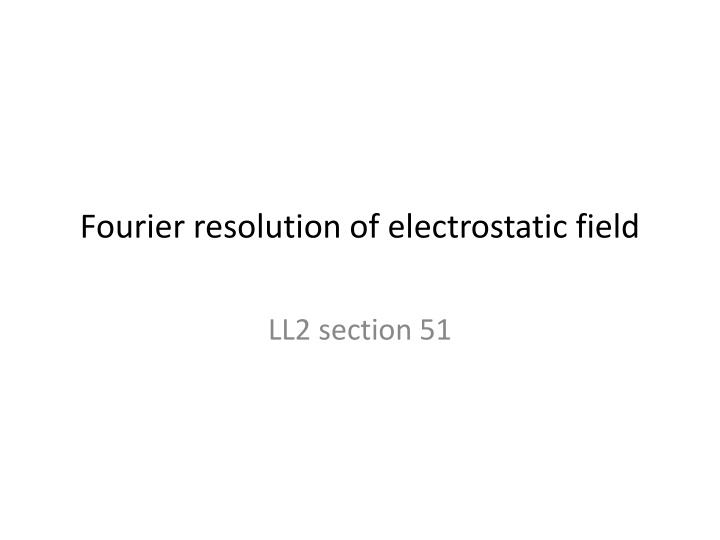
Fourier Resolution in Electrostatic Field Analysis
Explore the application of Fourier integral in analyzing electrostatic fields, delving into wave expansions, static charges, and Fourier components. Discover the complexities of static field wave equations and the role of plane waves in field expansions.
Download Presentation

Please find below an Image/Link to download the presentation.
The content on the website is provided AS IS for your information and personal use only. It may not be sold, licensed, or shared on other websites without obtaining consent from the author. If you encounter any issues during the download, it is possible that the publisher has removed the file from their server.
You are allowed to download the files provided on this website for personal or commercial use, subject to the condition that they are used lawfully. All files are the property of their respective owners.
The content on the website is provided AS IS for your information and personal use only. It may not be sold, licensed, or shared on other websites without obtaining consent from the author.
E N D
Presentation Transcript
Fourier resolution of electrostatic field LL2 section 51
The Fourier integral is an expansion in waves. This can be applied to the field of static charges.
Static field does not satisfy the homogeneous wave equation Since But The same holds for each term in the linear expansion of the static field in terms of monochromatic plane waves, so the usual dispersion relation does not apply.
The planes waves used in the expansion of a static field must have zero frequency, since But the wavevectors of these plane waves are not zero, since
Field of a point charge Poisson s Equation Fourier integral Plane waves with = 0 Coefficients. Amounts of each Fourier component. A function of wavevector k.
Inverse transform How we find the amount that each plane wave contributes to the expansion. We project the potential on to each plane wave with wavevector k.
Apply Laplace operator to both sides of expansion of potential Fourier component of is
Inverse Poisson s equation for point charge This gives a second expression for the Fourier component of the Laplacian of point-charge potential
Equate the two expressions Fourier coefficient in plane- wave expansion of potential of a point charge Terms with slow spatial variations (small k) dominate. No wiggles Q
For point charge Waves that superpose to give the Coulomb field are polarized parallel to their wavevectors: Longitudinal. Electric field points in the same direction as the change in E with r. r
